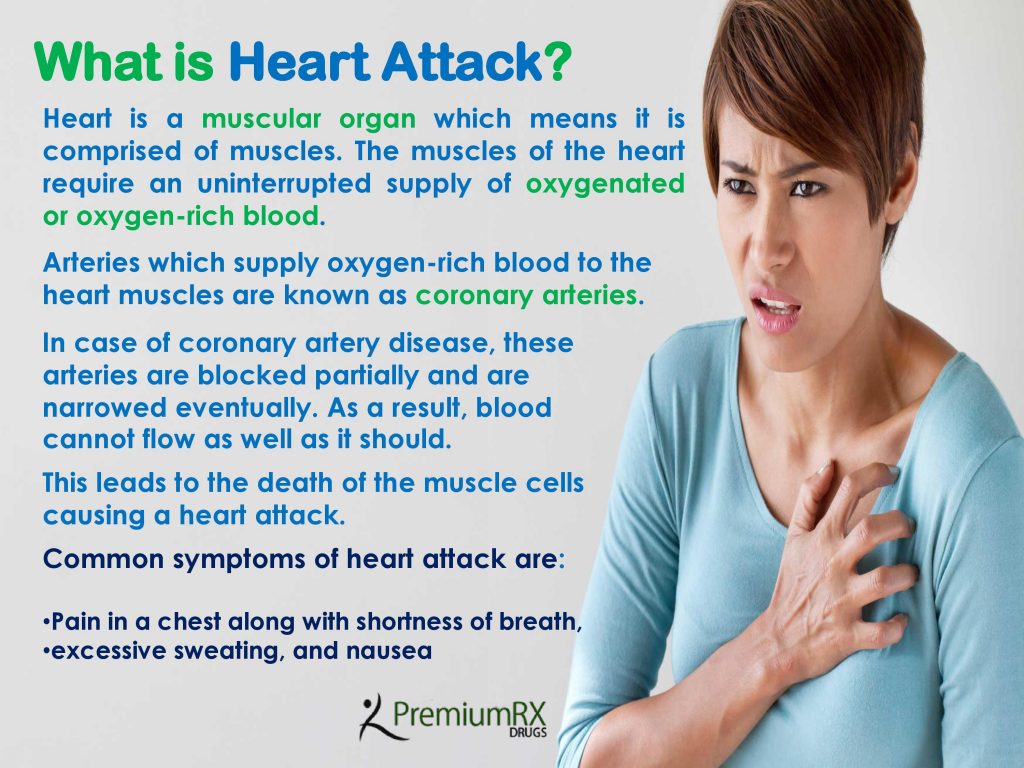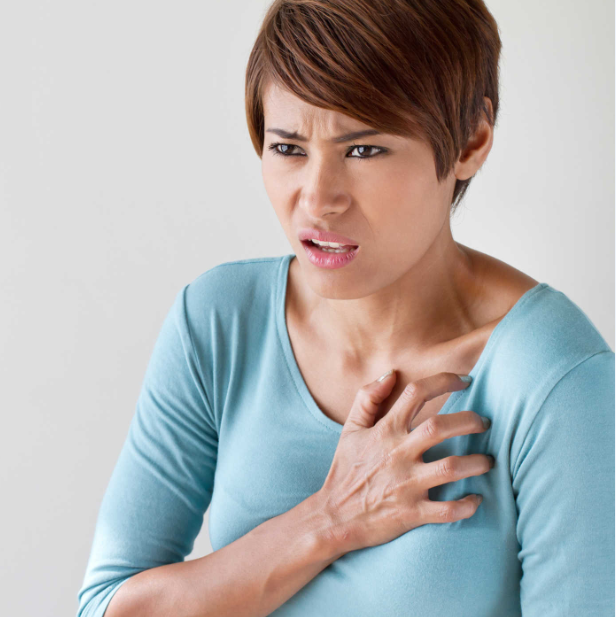Heart is a muscular organ which means it is comprised of muscles. The muscles of the heart require an uninterrupted supply of oxygenated or oxygen-rich blood. The oxygen-rich blood is supplied to it by arteries.
Purification of impure blood takes place in the heart. This oxygenated blood is supplied to the entire body via the aorta. Aorta is divided into arteries which supply oxygenated blood to all the body parts. Arteries which supply oxygen-rich blood to the heart muscles are known as coronary arteries.

The coronary arteries run along the surface of the heart. They are divided into the right coronary arteries and the left coronary arteries. They distribute oxygenated blood to different parts of the heart.
The muscles of the heart require a constant supply of oxygenated blood for the sustenance of the heart. The right ventricle of the heart and the lower portion of the left ventricle are furnished with the right coronary artery. The majority of the left ventricle is furnished with the left anterior coronary artery. There is circumflex artery which supplies the back of the left ventricle.
In case of coronary artery disease, these arteries are narrowed which leads to blockage in them. As a result, blood cannot flow as well as it should. Build up of proteins, calcium, fatty matter and inflammatory cells narrow these arteries causing the formation of plaques in them. These plaques have differed in size, the plaques are mushy and soft on the inside and hard on the outside.
Big plaques are more prone to rupture. Rupturing of the outer part of the plaque invites platelets (disc-shaped components in the blood that aid in clotting) to the area of injury. Platelets form blood clots around the plaque to support healing.
Blood clots block the arteries and the heart is not able to receive an adequate amount of oxygen-rich blood. If a blood clot completely blocks the arteries, the heart muscles become starved for oxygen. Within a short period of time, heart muscle cells begin to die for permanent damage. This is called a heart attack.
A heart attack can also be caused by the coronary syndrome. In this syndrome, the coronary arteries twitch or contract in a way which causes lowering of blood supply to the heart muscles (ischemia). It may occur at rest and can even occur in people who do not have coronary artery disease.
Each coronary artery supplies oxygenated blood to different regions of the heart. The size of the area supplied by the blocked artery and, the time between injury and treatment determine the amount of damage done to the heart muscles.
After suffering from a heart attack, the heart begins to recover. It takes about eight weeks to heal. The healing process in the heart is same as the healing process of a wound on the skin and it ends with the formation of a scar in the damaged area. So, the pumping ability of the heart is reduced after a heart attack.
What causes a heart attack?
Oxygenated blood is supplied to the heart by coronary arteries. The heart muscles need a constant supply of oxygenated blood for the nourishment of the heart. The right ventricle of the heart and the lower portion of the left ventricle are supplied by the right coronary artery. The majority of the left ventricle is supplied by the left anterior coronary artery.
In case of coronary artery disease, these arteries are blocked partially and are narrowed eventually. As a result, blood cannot flow as well as it should. These narrow arteries cause the formation of plaques in them by a build up of proteins, calcium, fatty matter and inflammatory cells. These plaques vary in size. The plaques deposits are mushy and soft on the inside and hard on the outside.
When the plaque has grown bigger and hard on the outside, it is subjected to rupture. Rupturing of the outer shell of the plaque invites platelets which are disc-shaped components in the blood that aid in clotting, to that area. Platelets form blood clots around the plaque to support healing.
Blood clots block the arteries and the heart is not able to receive sufficient amount of oxygen-rich blood. If a blood clot completely blocks the arteries, the heart muscles become starved for oxygen. This leads to the death of the muscle cells causing a heart attack.
A coronary spasm can also cause a heart attack. During the coronary spasm, the coronary arteries twitch or contract in a manner that brings the reduction in the blood supply to the heart muscles. Reduction of blood supply to the heart is known as ischemia. It may occur at rest and can even occur in people who do not have coronary artery disease.
Each coronary artery supplies different regions of the heart with oxygen-rich blood. The size of the area supplied by the blocked artery and, the time between injury and treatment determine the amount of damage done to the heart muscles.
Heart attack risk factors
The heart attack is most frequently caused by Coronary artery disease (CAD) or atherosclerotic heart disease (AHSD). In CAD or AHSD, the arteries which supply oxygen-rich blood to the heart muscles, get narrowed. This happens because of the build-up of cholesterol plaques along the inner walls of these arteries. The outer shell of the plaques gets ruptured and platelets come to their rescue. Platelets form blood clots and block the supply of oxygenated blood to the heart muscles.
The risk factors for AHSD include:
- high cholesterol
- high blood pressure
- cigarette smoking
- diabetes, and
- a family history
While heredity can’t be controlled or prevented, other risk factors can be reduced to try to prevent AHSD from developing. If a person, already has atherosclerosis (a disease of the arteries in which there is deposition of plaques on the inner walls of the arteries), he can minimize these risk factors to prevent further narrowing of the arteries.
Other causes of the heart attack are:
- Use of cocaine: Cocaine can cause the heart muscles to twitch enough to cause a heart attack. The drug can also cause deadly heart rhythms by asserting it’s irritant effect on the heart’s electrical system.
- Coronary artery vasospasm or prinzmetal angina: Coronary arteries can twitch or contract in a way that causes chest pain (angina). This is known as Prinzmetal angina.
- Atypical coronary artery: In their normal position, the coronary arteries lie on the surface of the heart. Sometimes, the path of one or more arteries may change and dive into the heart muscles. When the heart muscles contract, they can twist the arteries and cause chest pain or angina.
- Insufficient oxygen supply: Like other muscles of the body, the heart muscles also require the uninterrupted supply of oxygenated blood. If there isn’t sufficient oxygen delivery, angina and heart attack can occur.
Heart attack symptoms and signs
Common symptoms of heart attack are:
- pain in a chest along with shortness of breath,
- excessive sweating, and
- nausea
The chest pain may be described as an ache, a pressure, fullness or tightness. Pain may also radiate from the chest to the shoulder, neck, jaw, or back.
Many people do not have these common signs. Other signs and symptoms of heart attack are:
- sweating, nausea, dizziness or vomiting,
- shortness of breath,
- the pain only in the shoulders or arms,
- jaw ache, or
- indigestion or choking feeling ( may feel like heartburn)
- light-headedness
- a feeling of breaking out in a cold sweat
- irregular or rapid heartbeats
These signs and symptoms are not the same for all and vary from person to person. Some people can get a heart attack without having many of these symptoms.
Signs and symptoms of heart attack are different in women. They can so unusual and unclear that they can be easily missed. Some women may experience nausea, light-headedness, fainting, extreme fatigue, dizziness, or pressure in the upper back.
When to seek medical care?
Chest pain is almost always considered an urgent situation. Apart from the heart attack, aortic dissection or tear and pulmonary embolus (formation of blood clot in the lung) can be lethal causes of chest pain.
Chest pain arising from a heart attack is described as chest pressure, tightness, or fullness with radiation of the pain to the shoulders, neck, jaw and down the arms. This pain is accompanied by shortness of breath or sweating. These are the common signs and symptoms of a heart attack but unfortunately, many people don’t have them. Many people have indigestion, profuse sweating, profound weakness, nausea, or shortness of breath as the main symptoms of a heart attack.
Rush to an emergency unit or call an ambulance as soon as you recognise these symptoms. First responders, emergency medical technicians, and paramedics can start testing and treatment even before you reach the hospital.
Many people lose their lives because they take chest pain and other symptoms of the heart attack like indigestion, nausea, fatigue or other illness, lightly. They ignore their fear. If you feel chest in your pain, don’t take it for granted. Doctors and medical staff in hospitals take chest pain very seriously. Seek medical care if you are unsure whether your symptoms are linked to heart disease or not.
Heart Attack Treatment
As soon as a heart attack is diagnosed, treatment starts. The treatment possibly begins in the ambulance or emergency room. The treatment for heart attack includes both medical treatment (mainly thrombolytic therapy) that is by using drugs and surgical procedures.
The heart attack is diagnosed by measuring heart’s electrical activity on an ECG (Electrocardiogram). The aim is to unblock the blocked artery as quickly as possible and return back blood supply to the heart. Unblocking of the artery should be as fast as possible because time is the most important factor in the treatment of a heart attack. The longer the delay in getting medical care, more intense is the damage.
Treatment must be carried out in a hospital and include administration of clot-busting drugs (thrombolytic drugs) to dissolve the clot at the site of the ruptured plaque. It also includes procedures like catheterization (in which a long tube is inserted in an artery and threaded to the blood vessels of the heart) and, angioplasty (surgical fixing or unblocking of a blood vessel).
How to prevent a heart attack?
While people cannot control their heredity, they can lessen the risk factors for heart disease by:
- controlling cholesterol, high blood pressure, diabetes;
- quitting smoking;
- doing exercise regularly;
- taking a low-dose or baby aspirin every day
These are all lifetime challenges to prevent stroke, heart disease, and peripheral vascular disease.
Even with the best of preventive care, heart attacks happen. It’s safe to develop an emergency plan so that if in case, chest pain occurs, you and your family know how to seek treatment without much delay.
Marie
Latest posts by Marie (see all)
- Revize Micro Gel 0.025% | Uses, Price, Side effects - April 9, 2025
- What is Evalon Cream: How to Apply, Benefit, who Can Use - April 4, 2025
- Understanding Avanair 200 mg: A Comprehensive Guide - April 4, 2025




